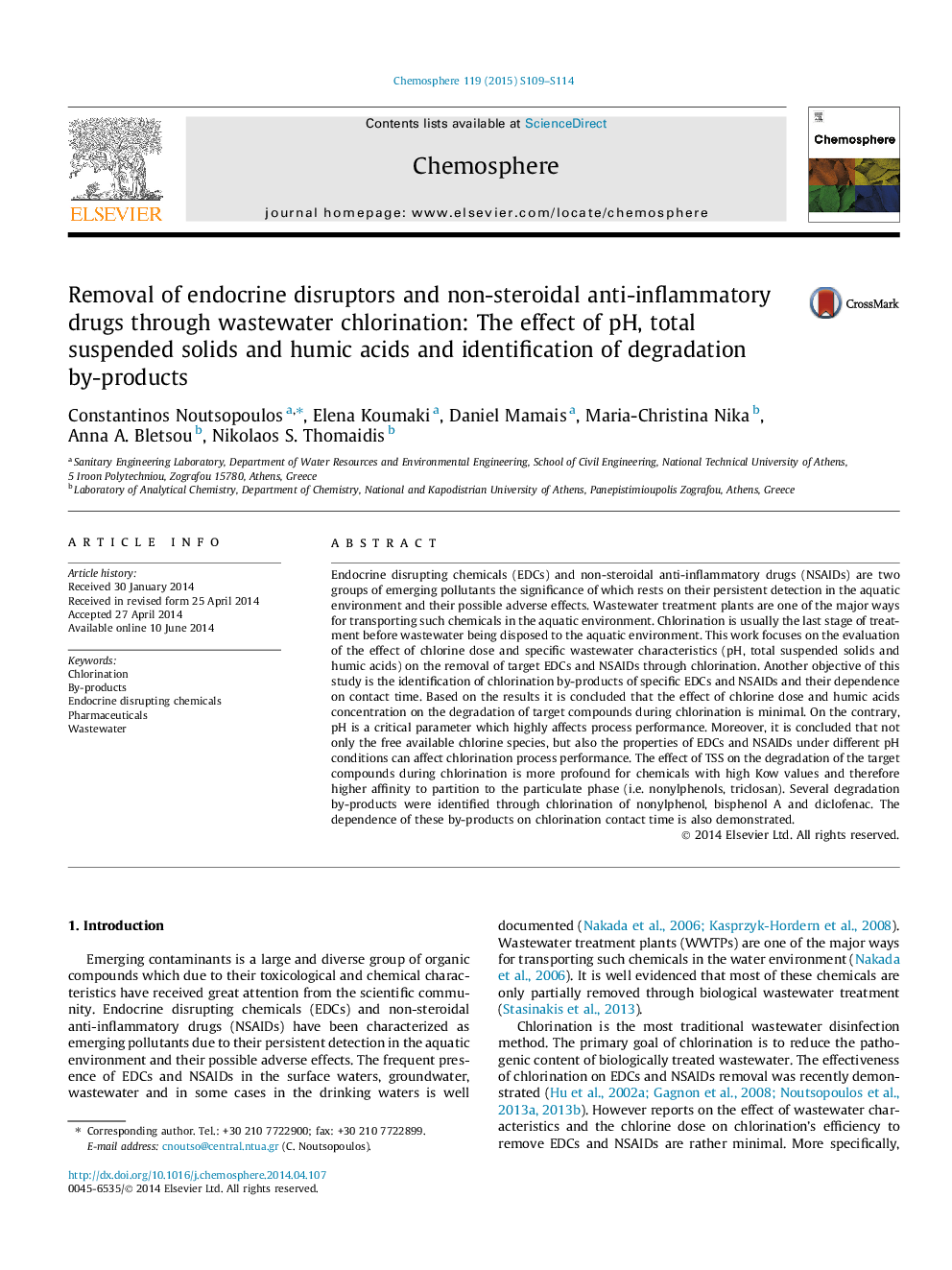| کد مقاله | کد نشریه | سال انتشار | مقاله انگلیسی | نسخه تمام متن |
|---|---|---|---|---|
| 4408711 | 1307430 | 2015 | 6 صفحه PDF | دانلود رایگان |

Endocrine disrupting chemicals (EDCs) and non-steroidal anti-inflammatory drugs (NSAIDs) are two groups of emerging pollutants the significance of which rests on their persistent detection in the aquatic environment and their possible adverse effects. Wastewater treatment plants are one of the major ways for transporting such chemicals in the aquatic environment. Chlorination is usually the last stage of treatment before wastewater being disposed to the aquatic environment. This work focuses on the evaluation of the effect of chlorine dose and specific wastewater characteristics (pH, total suspended solids and humic acids) on the removal of target EDCs and NSAIDs through chlorination. Another objective of this study is the identification of chlorination by-products of specific EDCs and NSAIDs and their dependence on contact time. Based on the results it is concluded that the effect of chlorine dose and humic acids concentration on the degradation of target compounds during chlorination is minimal. On the contrary, pH is a critical parameter which highly affects process performance. Moreover, it is concluded that not only the free available chlorine species, but also the properties of EDCs and NSAIDs under different pH conditions can affect chlorination process performance. The effect of TSS on the degradation of the target compounds during chlorination is more profound for chemicals with high Kow values and therefore higher affinity to partition to the particulate phase (i.e. nonylphenols, triclosan). Several degradation by-products were identified through chlorination of nonylphenol, bisphenol A and diclofenac. The dependence of these by-products on chlorination contact time is also demonstrated.
Journal: Chemosphere - Volume 119, Supplement, January 2015, Pages S109–S114